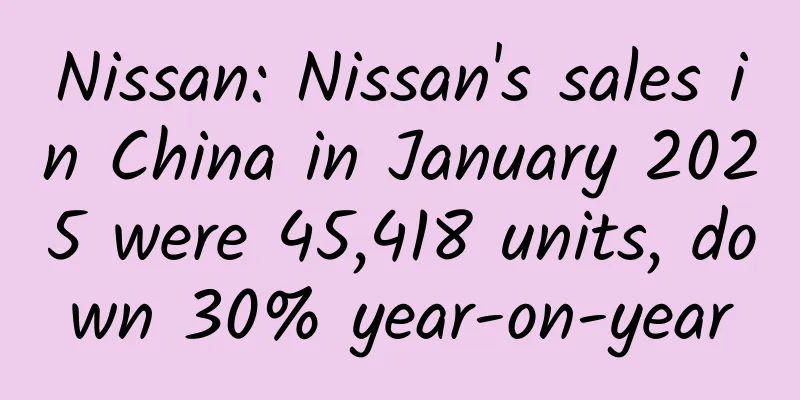Mini Program Operation and Promotion Strategy

|
In my opinion, mini program operation includes three basic factors: promotion + product + operation. Promotion: Responsible for attracting new users and creating a base of new users, including the base of user quantity and the base of user value. Products and operations: responsible for promoting activation, retention, conversion and fission, creating product experience coefficient and operation effect coefficient. So the following relational model (non-computational model) is obtained: Therefore, this article will start from 1) promotion 2) product 3) operation, and briefly sort out the thinking framework that can be used in each aspect (taking the trendy e-commerce applet as an example, so some methods may not be applicable to other industries) 1. PromotionIt can be seen from the formula that promotion creates a user base, both in terms of user quantity and user value. The larger the base, the greater the potential value. If the base is small, no matter how good the subsequent products and operations are, it will be difficult to create large-scale growth. The number of new users and the quality of users are equally important, so choosing a channel that is consistent with the brand’s tone for promotion will achieve twice the result with half the effort. The following pictures summarize the common ways to attract new users to mini programs from both online and offline perspectives for your reference. 2. ProductsThe product experience coefficient is more likely to be a value between (0,1) than doubling the user base by 1x, 2x, or 3x. Only the leading products in a certain field can trigger self-propagation among users due to the product experience, leading to a doubling of user growth. And because the current market competition is fierce, the more likely scenario is: "What the hell is this?" and then users use other platforms. This is why product experience needs to be taken seriously. If the product experience coefficient = 0.5 or 0.1, then no promotion strategy or operation strategy can save it. We can analyze our products layer by layer from the five levels of "User Experience Elements" and think about where we can improve the product experience coefficient. The official mini program has always emphasized the product attribute of "use it and go", which means you can use it right after opening it and leave it after use, thus meeting the user's timeliness needs. Therefore, in terms of product function design, mini programs are not products that allow users to immerse themselves in the experience, but products that quickly meet needs. The usage scenario of mini programs is to meet users' timely needs during fragmented time. For products that want to focus on mini programs, it is the right choice to seize large-scale and high-frequency demand points and design simple but effective products. 1) The product is lightweight, focuses on core functions, and satisfies users' core needs throughout the entire process. Trendy e-commerce mini programs: They should focus on the user's shopping function and satisfy the user throughout the entire process, including recommendations for various marketing activities, exclusive and diverse products/brands, competitive prices, efficient shopping processes, convenient customer service, fast logistics, guaranteed after-sales service, and be sure to give users strong reasons to come back again. 2) Apply scenario-based services, determine the high-frequency applicable scenarios for target users, promote product usage in these scenarios, occupy the minds of users, and consolidate product positioning in these scenarios. Only in this way can we ensure the retention of users in the “use-and-go” mode. 3) Social functions: Make full use of the advantages of WeChat social communities and design high-quality spontaneous sharing to ensure the efficiency of communication and the quality of new users. 3. OperationThe goal of the operational effectiveness coefficient is to double the user base by 1x 2x 3x Nx, both in terms of user numbers and user value. The operation here is based on product functions, and the two work together to promote user activation, retention, conversion and fission. The following shows the commonly used methods for promoting activation, retention, transformation, and fission. 1) Promote activation2) Retention3) Conversion4) FissionThis article is mainly to sort out the ideas, welcome everyone to add and correct ~ Author: Manjie_MEEK Source: Manjie_MEEK |
Recommend
The "formula for becoming popular" summarized after 10 years of marketing experience, 99% of the hot spots became popular this way!
"Formula for going viral": creating sur...
The latest news on the lifting of the Chengdu epidemic lockdown in 2022: Has it been lifted now? How much unblocking is needed?
In recent days, the local epidemic in Chengdu has...
Google launches Android Auto Beta testing program to encourage users to try and submit feedback
Google is launching a new beta program for Androi...
How do community apps stimulate users to produce high-quality content?
The product chain of a community product is: &quo...
Unexpectedly popular! iOS 15 update rate: nearly 60% of devices have installed it 80 days after release
[[439742]] After the official version of iOS 15 w...
Analysis of explosive materials and landing pages in 6 hot investment industries!
The more exaggerated, the more explosive? Totally...
Is eating Cordyceps sinensis useful for cancer?
I believe everyone knows the power of Cordyceps a...
What knowledge is needed to develop WeChat Mini Programs? What language is needed to develop WeChat Mini Programs?
It has been more than three years since the launc...
Private tips on how to place game information streams, told to you for free!
Before reading this article, we need to have a co...
The strange commonality of the living room economy, Google goes left, Apple goes right?
The living room is one of the places where family...
How to do a good job in Zhihu promotion and traffic generation? 3 key points!
As a latecomer, Zhihu is still well-known on the ...
The most "spring" seasonal vegetables, eating too much will cause poisoning! 2 eating tips for you →
What dish is the most "spring-like"? Fo...
Gaining 3 pounds every holiday season? Learn the "10 fists" principle and lose weight without dieting!
After a baptism of delicious food during the Spri...
Niu anchor created beauty with zero basic live streaming and sales practice, three-day course and three major systems to create a million-dollar live streaming anchor
Niu anchor created beauty, 0 basic live broadcast...
2014~2016 The most powerful summary of H5, global H5 development...
To summarize the popular H5 cases from 2014 to 20...









